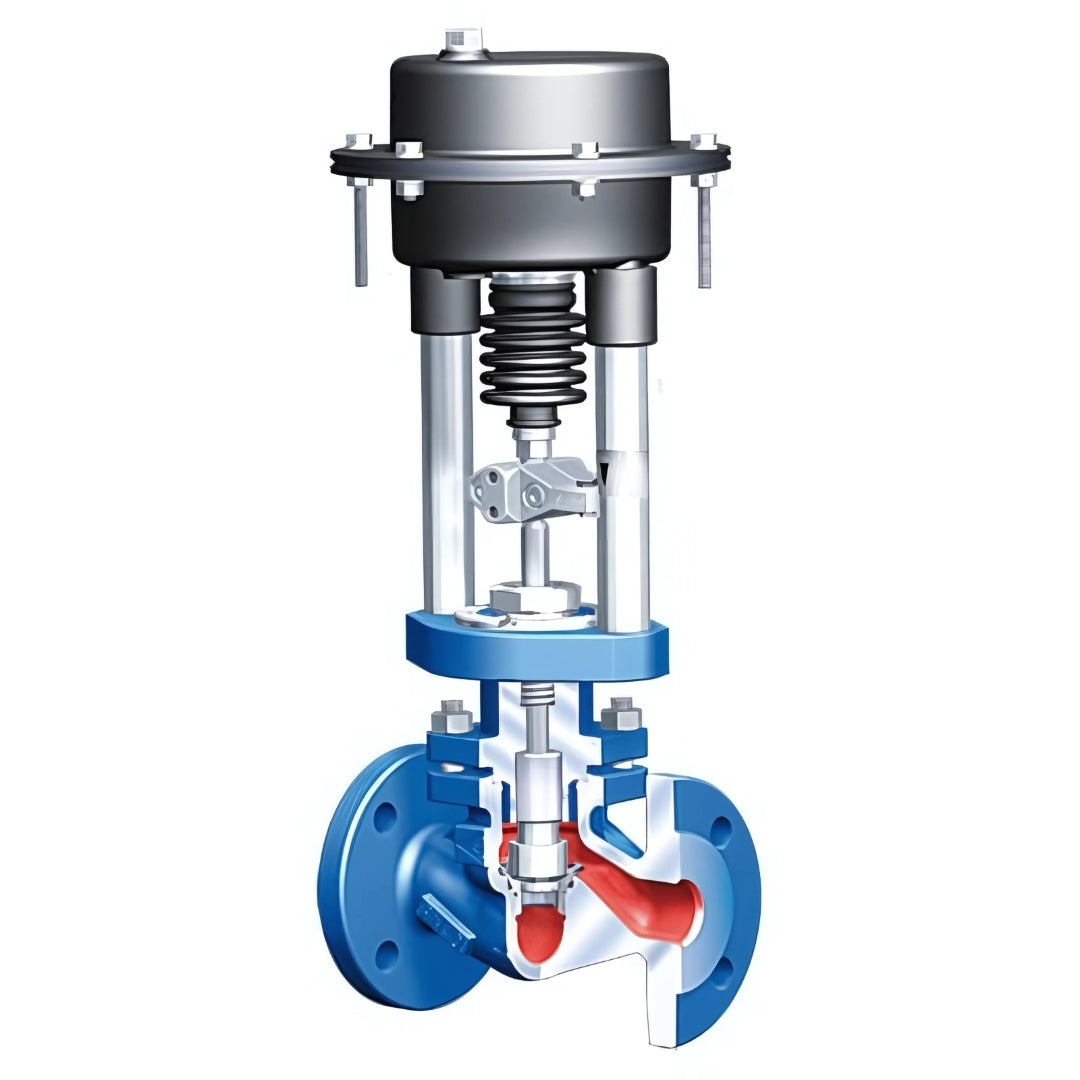Steam Valves
Ari Armaturen STEVI Vario Control Valve (Flanged PN40, Cast Steel Body, Electric Actuator)
Ari Armaturen STEVI Vario Control Valve (Flanged PN40, Cast Steel Body, Electric Actuator)
Couldn't load pickup availability
The STEVI Vario Control Valve with PN40 flanged connections, a cast steel body, and an electric actuator is built to provide high-precision control of flow, pressure, and temperature across demanding process systems. Designed for continuous modulation, this valve offers smooth, accurate regulation for steam, gases, and liquids in high-pressure environments.
Constructed from robust cast steel, the valve body offers excellent mechanical strength and temperature resistance, making it ideal for industrial process control in power plants, chemical plants, HVAC systems, and steam networks. The PN40 flange rating ensures safe operation in high-pressure systems, while the integrated electric actuator delivers precise, automated control — eliminating the need for manual intervention and allowing for integration with control systems such as PLCs and DCS platforms.
The Ari Armaturen STEVI Vario’s internal components are engineered for reliability, with tight shut-off performance and low hysteresis. Its modular design allows for easy maintenance and adaptation to changing system requirements.
Key Features
Electric Actuator
Provides precise modulating control and integration with automation systems for consistent performance.
PN40 Flanged Connections
Suited for high-pressure applications with secure, standardised flange mounting.
Cast Steel Valve Body
Offers high durability and temperature resistance for harsh industrial environments.
Accurate Flow Control
Ideal for regulating pressure, flow, and temperature with minimal hysteresis and high repeatability.
Low Maintenance Design
Modular construction allows easy servicing and actuator replacement.
Versatile Application Range
Widely used in steam lines, chemical dosing, heating networks, and general process control.
Share

FAQ's
What is the difference between a valve and an actuator?
What types of actuators are available?
The main types of actuators are:
Pneumatic actuators – use compressed air for fast, reliable operation.
Electric actuators – use electrical power for precise control.
Hydraulic actuators – use fluid pressure for high-torque applications.
Each type offers unique advantages depending on the environment, media, and system control needs.
How do I choose the right actuator for my valve?
To select the correct actuator, consider:
Valve type and torque requirement
Power source available (air, electric, or hydraulic)
Operating environment (temperature, humidity, hazardous area)
Control signal type (on/off or modulating)
Matching actuator torque and compatibility with the valve’s ISO mounting ensures reliable performance.
What are the main types of valves used in automation?
The most common valves in automated systems include:
Ball valves – for tight shutoff and quick operation.
Butterfly valves – for larger flow control with compact design.
Globe valves – for precise throttling and flow regulation.
Check valves – to prevent backflow.
Gate valves – for full bore flow isolation.
What’s the difference between a double-acting and spring-return actuator?
Double-acting actuators use air (or power) to both open and close the valve.
Spring-return actuators use air to open (or close) the valve, and a built-in spring to automatically return it to a safe position when power or air is lost — ideal for fail-safe operation.
How often should valves and actuators be serviced?
Regular maintenance intervals depend on operating conditions, but a good rule of thumb is to inspect every 6–12 months.
This includes checking for leaks, lubrication, seal wear, and actuator responsiveness to prevent unexpected downtime.

